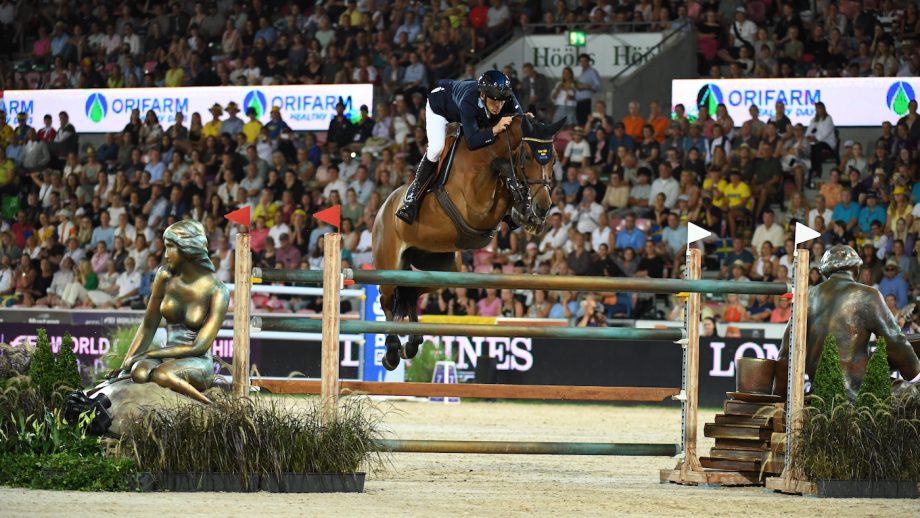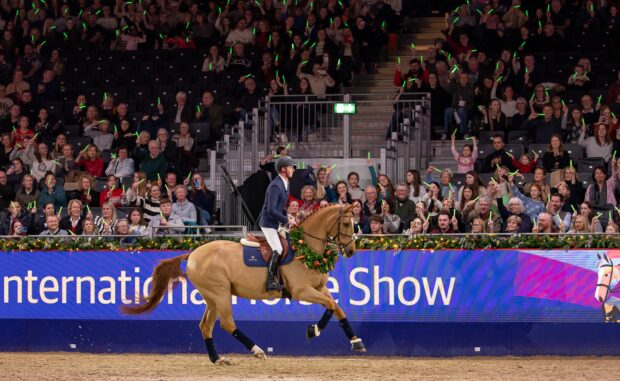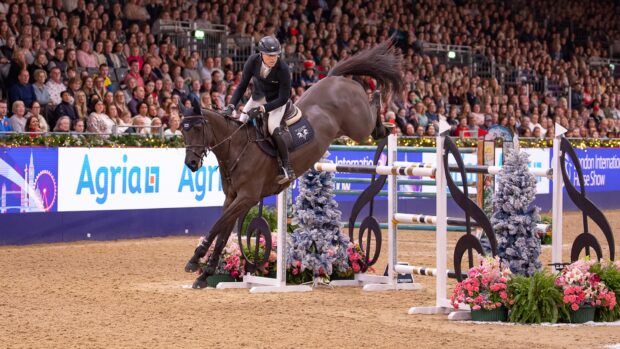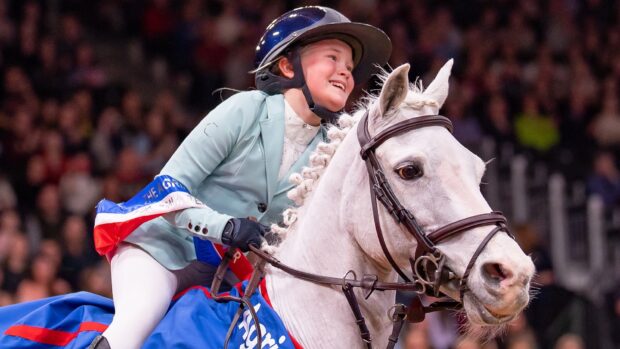RESEARCHERS behind a study into the difference in equine movement when horses are shod and unshod hope to help reduce lameness and benefit horses and owners.
The first findings of the collaborative study, involving top showjumper Peder Fredricson, vet Staffan Lidbeck and Lars Roepstorff, professor and researcher from the Swedish University of Agricultural Sciences, and sponsored by insurer Agria’s research fund, were announced at the World Showjumping Championships.
Peder, who was won world and Olympic team gold on an unshod horse, said: “I’ve been riding my horses barefoot for a couple of years, and have found that barefoot, they’re healthier and have fewer injuries, so I think it will be very interesting to show why this is.”
Mr Lidbeck, who competed alongside Peder before he switched from eventing to showjumping, and has known him for years, said he was “sceptical” when Peder first mentioned riding unshod horses.
“But after a while, I could see with my own eyes his horses getting sounder,” he said. “He said he was a bit disappointed the veterinary community didn’t really care about this, and I was thinking about that. He’s correct, and I wanted to do something.”
Mr Lidbeck contacted Prof Roepstorff, who said he was happy to look into this “very interesting” subject, which also connects to his work on different arena surfaces. He added that the force on each of a horse’s limbs when landing after a jump are huge – “we’re talking tonnes” – so as well as the surface, the treatment of the feet is key to equine health and performance.
The researchers looked at previous studies, and then interviewed top riders, vets, farriers and others about their unshod experience.
“There’s no scientific knowledge about competing showjumping horses barefoot,” Mr Lidbeck said. “There’s quite a lot of scepticism. The normal state of mind is that horses should be shod; we don’t ask ‘Why do we have shoes on the horse?’”
The researchers then carried out practical tests; using markers, video and motion analysis on horses working on the flat and over jumps, shod and unshod, to try to measure any differences in movement.
“It’s important to say you go in without expectations,” Prof Roepstorff said. “The fun of research is when you find things you didn’t expect. But what you hope to see is a difference, and what the difference is.”
The finding announced at this stage is that when unshod, the movement in the hoof is “freer and larger”, specifically widening over the heels, and contraction of heels during the breakover. There was also more vertical independent movement in the barefoot hoof.
“It’s very interesting as we see a lot of injuries in the hoof,” Mr Lidbeck said, adding that of course the hoof affects all the structures in the limb.
“Everyone talks of the hoof as a pump,” added Prof Roepstorff. “If we see not only widening but contraction, it could be two things contributing to increased blood flow [to the leg], which is also important in rehab.”
More results will be announced when they have been analysed.
“One study can never find all the answers but we hope it will contribute to the first piece of the puzzle that leads to new knowledge,” Prof Roepstorff said. “This is a dream for a researcher! We got 480 recordings, with 38 markers, so there’s a bit of data to analyse.”
The team stressed the importance of scientific data and findings to inform best practice, and that whatever the full results, each horse and its hooves must be considered individually, as what is best for one may not be for the next.
“When you want to develop, the only way forward is knowledge,” Peder said. “Hopefully, with this study, we can make something better for horses.”
Agria CEO Agnes Fabricius added: “Agria has for years striven to reduce the risk of horses suffering from lameness. I have high hopes that we can get a result that in the long run can benefit more horses and owners.”
What do you think of the shod/unshod debate? Send your thoughts to hhletters@futurenet.com, including your name, and nearest town and county
You might also be interested in:

‘Her feet are like rocks’: going barefoot pays off for this seven-year-old mare

H&H question of the week: to shoe, or not to shoe — should my horse go barefoot?
Rick Farr of Farr & Pursey Equine Vets shares his expert advice on the pros and cons of going unshod

Barefoot versus shoes: what’s the verdict?
The approach to perfect hoof health has become contentious, at times even a combative discussion between shoeing the horse or

Subscribe to Horse & Hound magazine today – and enjoy unlimited website access all year round
Horse & Hound magazine, out every Thursday, is packed with all the latest news and reports, as well as interviews, specials, nostalgia, vet and training advice. Find how you can enjoy the magazine delivered to your door every week, plus options to upgrade your subscription to access our online service that brings you breaking news and reports as well as other benefits.




